Marine Water Desalination
- Marine Desalination Plant
- Marine Sea Water Desalination System
- Case Study 50-Ton RO Desalination
- Case Study 10-Ton RO Desalination
- Case Study 350 m³/day Deionization Plant
- Case Study 1,000,000 GPD RO Desalination System
Here’s an overview of the Ultratec Water Treatment Marine Desalination Plant, focusing on its key features, technology, and operational aspects. Ultratec is known for its innovative desalination solutions, particularly in marine applications.
1. Technology
- Reverse Osmosis (RO): Ultratec employs advanced reverse osmosis technology to effectively desalinate seawater, achieving high desalination rates.
- High Efficiency: The plant can achieve a desalination rate of up to 99.5%, making it suitable for producing potable water from seawater.
- Multistage Design: Often designed with multiple stages to optimize recovery rates and minimize energy consumption.
2. Water Quality Standards
- First-Stage RO Water Quality: Complies with the National Standard for Drinking Water (GB5749-2022).
- Second-Stage RO Water Quality: Meets the Pure Water Standard.
3. Performance Features
- Energy Efficiency:
- Designed for low energy consumption, utilizing energy recovery devices to minimize operational costs.
- Compact Design:
- The plant is designed to be space-efficient, making it ideal for marine applications where space may be limited.
- Robust Construction:
- Built to withstand harsh marine environments, ensuring long-term reliability and performance.
- Low Maintenance:
- Engineered for easy maintenance and operation, often allowing for cleaning and repairs without disassembly.
4. Operational Aspects
- User-Friendly Interface:
- Equipped with modern control systems for easy monitoring and operation.
- Customizable Solutions:
- Capable of being tailored to meet specific client needs and operational conditions.
- Environmental Considerations:
- Designed to minimize environmental impact, including effective brine management practices.
5. Applications
- Marine Vessels: Suitable for various types of ships and marine platforms, providing a reliable source of freshwater.
- Offshore Facilities: Ideal for offshore oil rigs, research vessels, and other installations requiring freshwater supply.
- Coastal Communities: Can be utilized in coastal areas where freshwater resources are limited or unreliable.
6. Key Benefits
- Reliable Water Supply: Ensures a consistent and safe supply of freshwater in marine and offshore environments.
- Cost-Effective: Low operational costs contribute to the economic viability of water production.
- Scalable: Systems can be scaled to meet different water demands based on specific project requirements.
Conclusion
The Ultratec Marine Desalination Plant represents a cutting-edge solution for freshwater production in challenging marine environments. Its advanced technology, energy efficiency, and robust design make it a preferred choice for various applications requiring reliable desalination.
The marine seawater desalination system utilizes advanced reverse osmosis technology, optimized for maximum efficiency and effectiveness. This system is capable of effectively removing inorganic salts, heavy metal ions, organic contaminants, and harmful microorganisms from seawater. As a result, it produces high-quality drinking water that meets the National Drinking Water Sanitation Standards. With its innovative design, this desalination system ensures a reliable and sustainable source of fresh water for various applications.
The marine seawater desalination equipment employs reverse osmosis water treatment technology and has received positive feedback from numerous customers following years of practical application. This equipment is primarily designed for treating drinking water on boats, ships, offshore platforms, and islands. The processed water meets national drinking water standards and can undergo further treatment to achieve national pure water standards, ensuring a safe and reliable supply of high-quality water in various marine environments.
Specifications for the Marine Seawater Desalination Equipment
| MODEL | CAPACITY M3/DAY | POWER (KW) | RECOVER RATE % | DIMENSIONS (MM) |
|---|---|---|---|---|
| ULT M3 01 | 01 | 1.5 | 10% | 900 x 440 x 1500 |
| ULT M3 02 | 02 | 2.05 | 18% | 900 x 440 x 1600 |
| ULT M303 | 03 | 2.05 | 20% | 900 x 440 x 1600 |
| ULT M305 | 05 | 2.75 | 25% | 900 x 440 x 1600 |
| ULTM310 | 10 | 5.5 | 25% | 1400 x 700 x 1900 |
| ULTM3 15 | 15 | 5.5 | 30% | 1400 x 700 x 1900 |
These models are designed to cater to various water production needs while maintaining efficiency and compliance with drinking water standards. The equipment can be customized to meet specific customer requirements, with the standard models presented in the table for reference. If you have particular specifications or needs, please let us know, and we can design a solution tailored to your project.
Reference Video
You can watch the reference video below:
Watch the video on YouTubeCase Study: Ultratec 50-Ton RO Desalination System for Dream Rider Ship
Project Overview
- Project Name: Dream Rider Ship
- Location: Onboard the Dream Rider Ship
- Capacity: 50 tons (50,000 liters per day)
- Technology Used: Reverse Osmosis (RO)
Background
The Dream Rider Ship, designed for luxury cruises, required a reliable and sustainable source of freshwater for its passengers and crew. With limited freshwater storage capacity and the need for a constant supply during extended voyages, the Ultratec 50-ton RO desalination system was selected to ensure the ship could efficiently produce clean drinking water from seawater.
Objectives
- To produce 50,000 liters of potable water per day for onboard use.
- To implement an energy-efficient desalination process to minimize costs.
- To ensure compliance with international drinking water standards for safety and quality.
- To design a system that is compact and easy to maintain in a marine environment.
System Design
- Multi-Stage Reverse Osmosis: Optimized for high recovery rates and efficient desalination.
- Pre-Treatment:
- Multi-Media Filter: Removes large particles and sediments.
- Activated Carbon Filter: Reduces chlorine and organic compounds to protect the RO membranes.
- Precision Filter: Ensures the feed water quality is suitable for RO.
- High-Pressure Pump: Delivers the required pressure for effective membrane filtration.
- RO Membrane System: Utilizes advanced membranes designed for high salinity seawater, achieving up to 99.5% desalination efficiency.
- Post-Treatment: Includes remineralization and UV disinfection to ensure water quality meets health standards.

Implementation
- Site Assessment: Conducted a detailed evaluation of the ship's existing water supply systems and requirements.
- System Integration: The Ultratec team installed the desalination system in a designated area onboard, ensuring minimal disruption to ship operations.
- Training: Crew members were trained on operating the system, routine maintenance, and troubleshooting procedures.
- Testing and Commissioning: The system was rigorously tested to ensure it met performance and safety standards before entering full operation.
Results
- Water Quality: The RO system produced water with TDS levels consistently below 500 mg/L, ensuring compliance with international drinking water standards.
- Operational Efficiency: The system achieved a desalination rate of 99.5%, effectively converting seawater into potable water.
- Cost-Effectiveness: Reduced reliance on external water supplies led to significant cost savings during long voyages.
- User Satisfaction: Passengers and crew reported high satisfaction levels due to the availability of fresh drinking water.
Challenges and Solutions
- Challenge: Managing fluctuating seawater quality due to environmental conditions.
Solution: Integrated advanced monitoring systems that adjust pre-treatment processes based on real-time water quality data. - Challenge: Space constraints onboard the ship.
Solution: Designed the system to be compact and modular, allowing for easy integration into the ship's existing infrastructure without compromising space.
Conclusion
The Ultratec 50-ton RO desalination system effectively provided a sustainable and reliable source of freshwater for the Dream Rider Ship. Its advanced technology, efficient design, and user-friendly operation ensured that the needs of passengers and crew were met, enhancing the overall experience onboard. This project highlights Ultratec’s commitment to delivering innovative water treatment solutions in marine environments.
Key Takeaways
- Reliability: The system ensured a continuous supply of safe drinking water during extended voyages.
- Efficiency: The energy-efficient design contributed to lower operational costs and sustainability.
- Customizability: The system was tailored to meet the unique requirements of the Dream Rider Ship, demonstrating Ultratec’s flexibility in design.
Case Study: Ultratec 10-Ton RO Desalination System for Armina Shipping
Project Overview
- Project Name: Ultratec 10-Ton RO Desalination System
- Client: Armina Shipping
- Location: Onboard Armina Shipping vessels
- Capacity: 10 tons (10,000 liters per day)
- Technology Used: Reverse Osmosis (RO)
Background
Armina Shipping operates a fleet of vessels that require a reliable source of freshwater for crew and operational needs. Due to limited freshwater storage and the necessity for a constant supply during voyages, the Ultratec 10-ton RO desalination system was selected to efficiently convert seawater into potable water.
Objectives
- To produce 10,000 liters of potable water per day to meet the needs of the crew onboard.
- To implement an energy-efficient desalination process to minimize operational costs.
- To ensure compliance with international drinking water standards for safety and quality.
- To design a compact system suitable for installation in the limited space available on ships.
System Design and Specifications
Key Components
- Multi-Stage Reverse Osmosis System:
- Pre-Treatment:
- Multi-Media Filter: Removes larger particles, sediments, and debris from seawater.
- Activated Carbon Filter: Eliminates chlorine and organic compounds, protecting the RO membranes.
- Precision Filter: Ensures that only high-quality feed water enters the RO membranes.
- High-Pressure Pump: Provides the necessary pressure (typically around 60–80 bar) for efficient operation of the RO system.
- RO Membrane System: Utilizes advanced membranes capable of achieving a desalination rate of up to 99.5%, effectively reducing the Total Dissolved Solids (TDS) levels.
- Post-Treatment: Includes remineralization and UV disinfection processes to ensure that the water produced meets health standards for drinking water.
- Pre-Treatment:
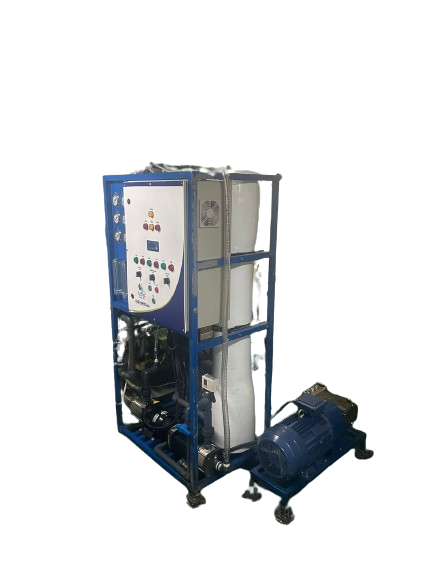
Technical Specifications
- Capacity: 10,000 liters per day
- Feed Water Quality: Seawater with TDS up to 40,000 mg/L
- Product Water Quality: TDS levels consistently below 500 mg/L
- Operating Pressure: < 6.5 MPa
- Power Requirements: Typically 220V/380V/440V, 50-60Hz, three-phase
Implementation
- Site Assessment: A comprehensive assessment of the vessel’s water supply needs and available installation space was conducted to ensure the system could be effectively integrated.
- System Integration: The Ultratec team installed the 10-ton RO system in the designated machinery area onboard the vessel, ensuring minimal disruption to normal operations.
- Crew Training: Crew members were trained on the operation, routine maintenance, and troubleshooting of the RO system to ensure smooth functionality.
- Testing and Commissioning: The system underwent rigorous testing to confirm that it met performance metrics and safety standards before being fully operational.
Results
- Water Quality: The system consistently produced water with TDS levels below 500 mg/L, ensuring compliance with international drinking water standards.
- Operational Efficiency: The 10-ton RO system achieved a desalination rate of 99.5%, successfully converting seawater into high-quality potable water.
- Cost Savings: Onboard production of freshwater reduced dependence on external water supplies, leading to significant operational cost savings for the shipping company.
- User Satisfaction: The crew reported high satisfaction levels due to the consistent availability of fresh drinking water during voyages.
Challenges and Solutions
- Challenge: Variability in seawater quality due to changing environmental conditions.
- Solution: The system was equipped with advanced monitoring and control features to adjust pre-treatment processes based on real-time water quality assessments.
- Challenge: Limited space on the ship for installation.
- Solution: The RO system was designed to be compact and modular, ensuring easy integration without occupying excessive space.
Conclusion
The Ultratec 10-ton RO desalination system effectively provided a reliable and efficient source of freshwater for Armina Shipping’s vessels. Its advanced technology, compact design, and user-friendly operation ensured that the needs of the crew were consistently met, enhancing the overall experience during voyages. This project demonstrates Ultratec's commitment to delivering effective water treatment solutions tailored for marine environments.
Key Takeaways
- Reliability: The system provided a continuous supply of safe drinking water, ensuring the health and comfort of the crew.
- Energy Efficiency: The design minimized energy consumption, contributing to lower operational costs.
- Customizability: The system was tailored to meet the specific needs of Armina Shipping, showcasing Ultratec’s flexibility in solution delivery.
Case Study: Ultratec 350 m³/Day Deionization Plant for Sharjah Waste to Energy
Project Overview
- Project Name: Sharjah Waste to Energy Deionization Plant
- Client: Sharjah Waste to Energy Project
- Location: Sharjah, United Arab Emirates
- Capacity: 350 m³/day (350,000 liters/day)
- Technology Used: Deionization (DI)
Background
The Sharjah Waste to Energy project aims to convert municipal solid waste into energy while ensuring that the by-products are treated effectively. Part of this initiative includes the need for high-quality deionized water to be used in various processes, including steam generation and cooling systems. Ultratec was selected to provide a robust deionization plant capable of producing 350 m³/day of deionized water.
Objectives
- To produce 350 m³/day of high-purity deionized water to support the energy generation processes.
- To ensure compliance with industrial water quality standards for process applications.
- To implement an energy-efficient and cost-effective solution for water treatment.
- To integrate the deionization system within the overall waste-to-energy facility seamlessly.
System Design and Specifications
Key Components
- Pre-Treatment System:
- Multi-Media Filters: Designed to remove suspended solids, turbidity, and larger particulate matter from the feed water.
- Activated Carbon Filters: Used to remove chlorine, organic compounds, and color from the water, protecting the downstream deionization equipment.
- Microfiltration or Ultrafiltration: Optional step to further ensure the removal of fine particles and microorganisms.
- Deionization System:
- Mixed Bed Ion Exchange Resins: Utilizes both cation and anion exchange resins to remove all dissolved ions from the water, ensuring high-purity deionized water.
- Two-Stage DI System: A two-stage process to enhance the quality of the deionized water produced, ensuring that all ion content is minimized.
- Post-Treatment:
- Polishing Filters: May include additional filtration to ensure the final product meets required purity levels.
- UV Treatment: Optional step for disinfection to eliminate any remaining microorganisms.
Technical Specifications
- Feed Water Quality: Municipal water or treated wastewater, depending on the source.
- Product Water Quality: Resistivity typically > 1 MΩ·cm, with low levels of Total Dissolved Solids (TDS).
- Flow Rate: 350 m³/day (approximately 14.6 m³/hour).
- Power Requirements: Dependent on the pump and auxiliary equipment used; typically, 220V or 380V systems.
Implementation
- Site Assessment: Conducted a thorough evaluation of the facility's water supply and treatment requirements, including assessments of existing infrastructure.
- System Design and Engineering: Developed a detailed design based on the assessment to ensure seamless integration with the waste-to-energy processes.
- Installation: The Ultratec team installed the deionization plant, ensuring all components were effectively integrated into the existing systems at the facility.
- Training: Provided comprehensive training for facility staff on the operation, maintenance, and troubleshooting of the deionization system.
- Testing and Commissioning: Conducted rigorous testing to validate performance metrics and ensure that the system met all water quality standards before full-scale operation.
Results
- Water Quality: The deionization plant consistently produced high-quality deionized water with resistivity levels above 1 MΩ·cm, suitable for industrial applications.
- Operational Efficiency: The system operated efficiently, maintaining the desired flow rate while minimizing operational costs.
- Cost Savings: Onsite deionization of water reduced the need for external water supplies, resulting in significant cost savings for the waste-to-energy facility.
- User Satisfaction: Facility operators reported high satisfaction levels due to the reliability of the deionized water supply for their processes.
Challenges and Solutions
- Challenge: Variability in feed water quality due to fluctuations in source water.
- Solution: Implemented a robust pre-treatment system capable of adjusting to varying water quality, ensuring optimal performance of the deionization process.
- Challenge: Integration with existing waste-to-energy processes.
- Solution: Designed the deionization plant with modular components to facilitate easy integration and maintenance within the existing facility framework.
Conclusion
The Ultratec 350 m³/day deionization plant successfully provided high-quality deionized water for the Sharjah Waste to Energy project. Its advanced design, energy efficiency, and reliable operation significantly contributed to the overall effectiveness of the facility. This project exemplifies Ultratec's commitment to delivering innovative water treatment solutions that meet the demands of modern waste management and energy production.
Key Takeaways
- Reliability: The deionization plant provided a continuous supply of high-quality deionized water essential for energy generation processes.
- Energy Efficiency: The design minimized energy consumption and operational costs while maintaining performance standards.
- Customizability: The system was tailored to meet the specific needs of the Sharjah Waste to Energy facility, demonstrating Ultra Tec’s flexibility in providing solutions.
If you need more specific information or additional details about the system, its components, or performance metrics, feel free to ask!
Case Study: Ultratec 1,000,000 GPD RO Desalination System for Presidential Palace, Abu Dhabi
Project Overview
- Project Name: Ultratec 1,000,000 GPD Desalination System
- Client: Presidential Palace, Abu Dhabi
- Location: Abu Dhabi, United Arab Emirates
- Capacity: 1,000,000 gallons per day (approximately 3,785,412 liters per day)
- Technology Used: Reverse Osmosis (RO)
Background
The Presidential Palace in Abu Dhabi, a key landmark, required a sustainable and reliable source of freshwater for its extensive landscaping, fountains, and other facilities. To meet this demand, Ultratec was chosen to implement a large-scale reverse osmosis desalination system capable of producing 1,000,000 GPD of high-quality potable water from seawater.
Objectives
- To produce 1,000,000 gallons per day of potable water for the Presidential Palace and surrounding gardens.
- To ensure compliance with international drinking water quality standards.
- To implement an energy-efficient solution to minimize operational costs.
- To provide a reliable source of freshwater with minimal environmental impact.
System Design and Specifications
Key Components
- Intake System:
- Seawater Intake: Designed to draw seawater from a nearby source, equipped with screens to prevent debris and marine life from entering the system.
- Pre-Treatment System:
- Multi-Media Filters: Remove larger particles and sediments from the seawater.
- Activated Carbon Filters: Eliminate chlorine and organic compounds that could damage the RO membranes.
- Micron Filtration: Further filters the feed water to ensure optimal conditions for the RO membranes.
- Reverse Osmosis System:
- High-Pressure Pump: Provides the necessary pressure (around 60-80 bar) for efficient operation of the RO system.
- RO Membrane Modules: Utilizes advanced membranes designed for high salinity seawater with a desalination rate of up to 99.5%.
- Energy Recovery Devices: Enhance energy efficiency by recovering energy from the pressurized brine stream.
- Post-Treatment:
- Remineralization System: Ensures the water has the appropriate mineral content for human consumption.
- Disinfection: Uses UV treatment or chlorination to ensure microbiological safety of the produced water.
Technical Specifications
- Capacity: 1,000,000 GPD (approximately 3,785,412 liters per day)
- Feed Water Quality: Seawater with TDS levels up to 40,000 mg/L
- Product Water Quality: TDS levels consistently below 500 mg/L, complying with drinking water standards.
- Operating Pressure: Typically less than 6.5 MPa (around 950 psi)
- Power Requirements: Approximately 380V, three-phase, 50-60Hz.
Implementation
- Site Assessment: Conducted a detailed evaluation of the Presidential Palace’s water supply needs, site conditions, and available infrastructure.
- System Design and Engineering: Developed a custom design based on the assessment to ensure seamless integration with the palace's existing systems.
- Installation: The Ultratec team installed the desalination system, ensuring all components were effectively integrated and tested.
- Training: Provided comprehensive training for the facility staff on the operation, maintenance, and troubleshooting of the RO system.
- Testing and Commissioning: Conducted thorough testing to ensure that the system met performance metrics and complied with safety and water quality standards before full operation.
Results
- Water Quality: The RO system consistently produced high-quality potable water with TDS levels below 500 mg/L, meeting international drinking water standards.
- Operational Efficiency: Achieved a desalination efficiency rate of 99.5%, effectively converting seawater into high-quality water.
- Cost Savings: The system significantly reduced reliance on external freshwater sources, leading to substantial cost savings for the palace.
- User Satisfaction: Staff reported high satisfaction levels due to the reliable availability of freshwater for landscaping and other uses.
Challenges and Solutions
- Challenge: Managing fluctuations in seawater quality due to environmental factors.
- Solution: Integrated advanced monitoring systems that automatically adjust pre-treatment processes based on real-time water quality data.
- Challenge: Space constraints for installation and operation.
- Solution: Designed a compact, modular system that fit within the available infrastructure of the palace without compromising performance.
Conclusion
The Ultratec 1,000,000 GPD RO desalination system successfully provided a sustainable and reliable source of freshwater for the Presidential Palace in Abu Dhabi. Its advanced technology, energy-efficient design, and compliance with drinking water standards made it an ideal solution for the palace's needs. This project highlights Ultratec's commitment to delivering innovative water treatment solutions tailored to the demands of high-profile clients.
Key Takeaways
- Reliability: The system provided a continuous supply of safe drinking water, essential for the palace's operations and landscaping needs.
- Energy Efficiency: The design minimized energy consumption and operational costs, making it an environmentally friendly solution.
- Customizability: The system was tailored to meet the specific needs of the Presidential Palace, demonstrating Ultratec’s flexibility in delivering solutions.
If you need more specific details or have any further questions about the system, feel free to ask!
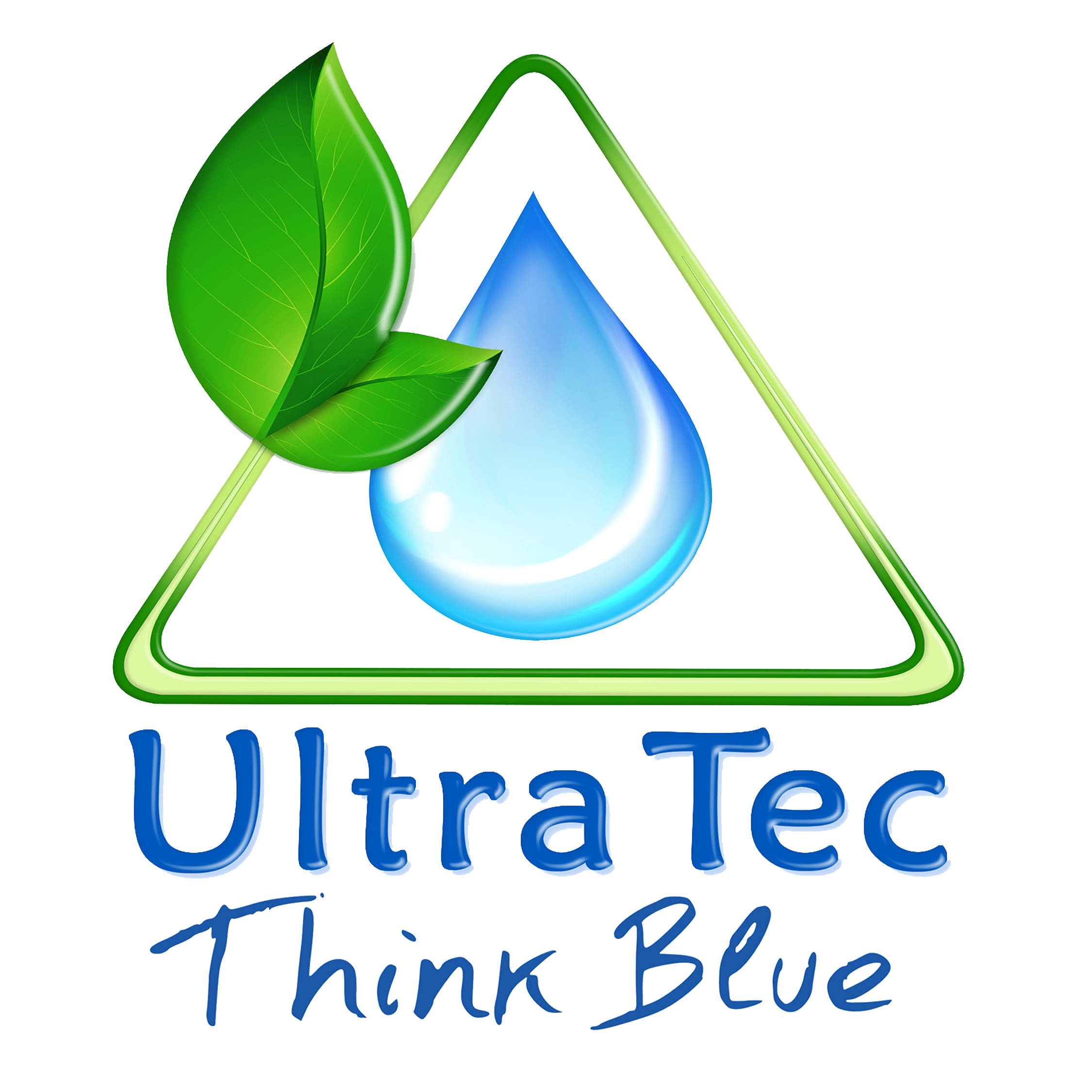
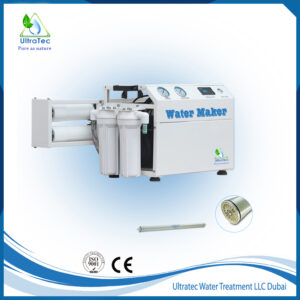
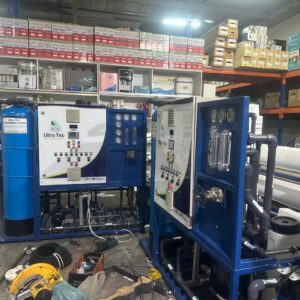
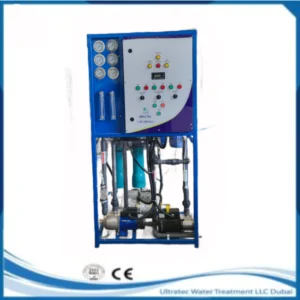
Reviews
There are no reviews yet.